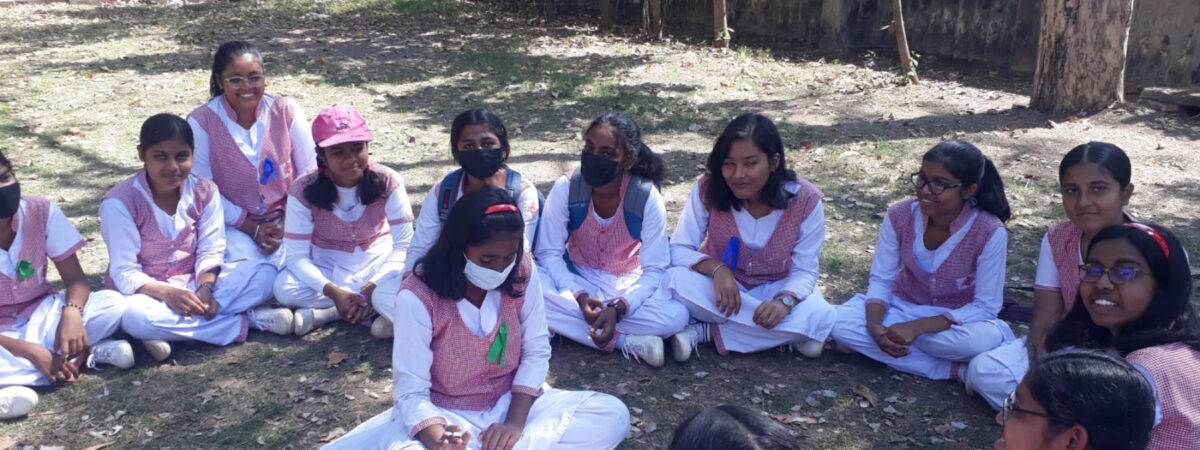
When children from communities experiencing poverty attend school, they may find themselves unable to pursue education. Even after attending school for a couple of years, most of them tend to drop out in search of livelihoods to support their families.
As an English teacher at a senior secondary institution for over 29 years, I can share a glimpse of how a group of my students worked to find viable solutions to alleviate the distress created by this dire situation and gained recognition for their efforts through the Ciena Solutions Challenge.
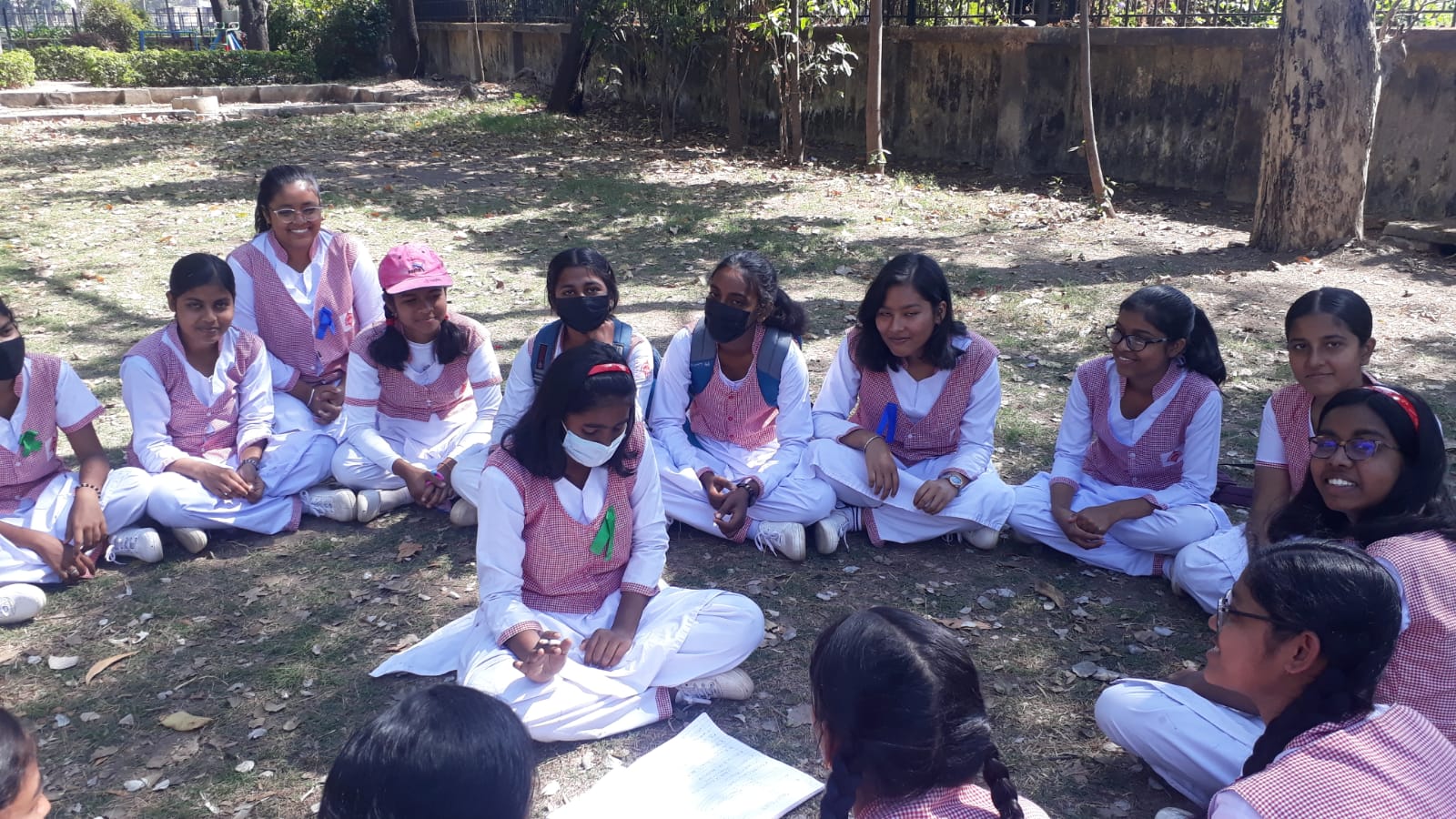
Students at the Santamayee Girls High School in Puralia, India, plan new project activities.
The path to designing a feasible solution to this mass scale, real-life problem was not devoid of challenges. However, my students’ main motivation came from a strong sense of empathy for the children who were suffering and a passionate urge to do something to alleviate their distress. There was also a thrill of working on something new that is potent enough to create far-reaching impacts. All of those reasons helped the girls to successfully navigate their way past various setbacks and apparent dead ends to find a solution.
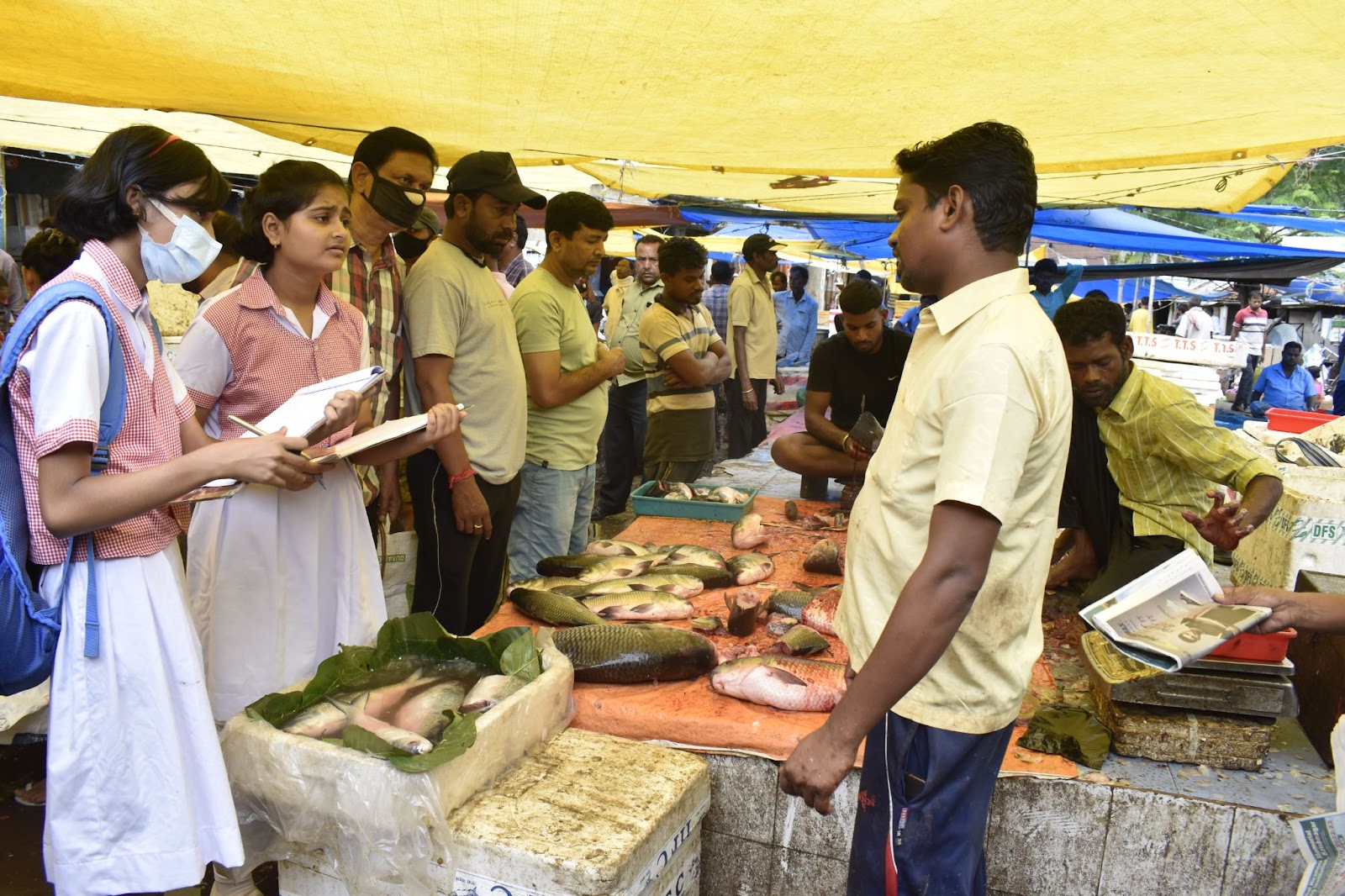
Students survey merchants at the fish market.
Throughout the project, the students worked diligently to keep things moving forward. They visited nearby villages to conduct surveys, interacted with the villagers, and got to witness a life which lies in stark contrast to the city life they are so used to. It was eye-opening for them. Through their later interactions with me, I could see that the trips had left a deep imprint on their minds, furthering their desire to do something to alter the adverse situations prevailing there. They also interacted with nutritionists, professors, and others who have been working to find sustainable solutions to this issue. These experiences helped them to discover possible solutions, which culminated in advocating for ring pisciculture, or fish farming, to address the problem of malnutrition.
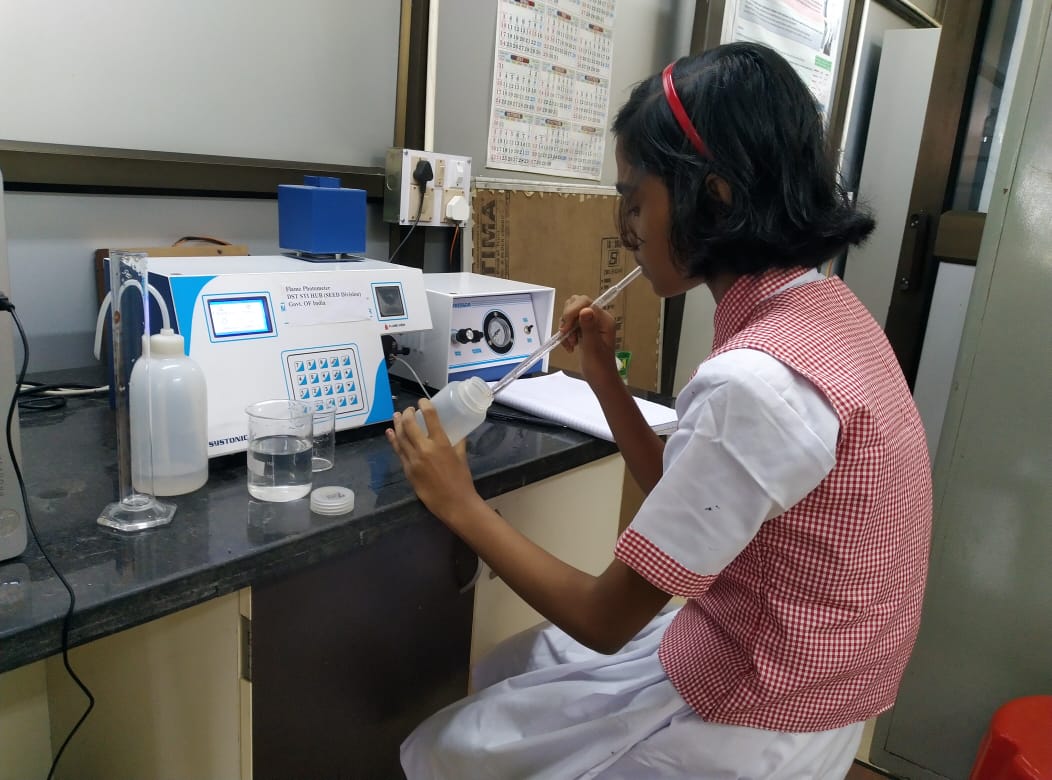
With the help of professors and scholars at Sidho-Kanho-Birsha University, the student team conducted experiments to learn more about the nutrients in fish and test water samples for their fish farm.
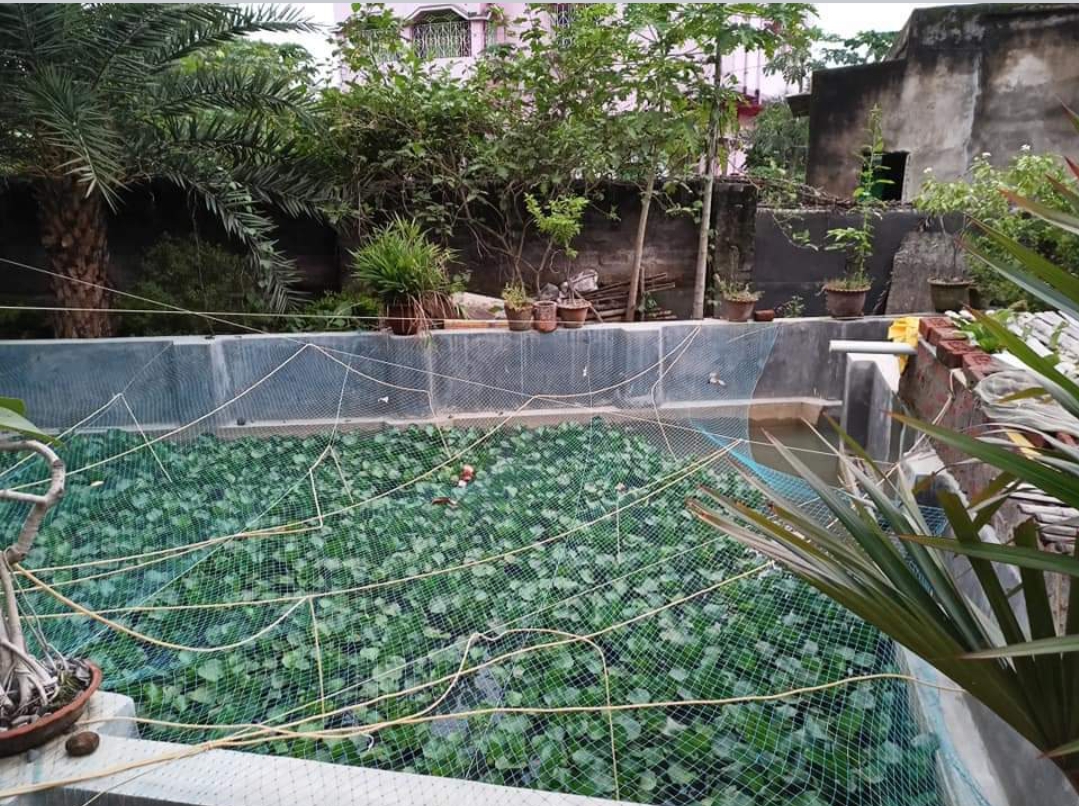
The Puralia community’s fish farm
Unfortunately, the ability to think and reflect on a profound level necessarily doesn’t happen often in school, as many students typically participate in only routine, curriculum-based learning. Engaging my students in a Challenge Based Learning approach helped me to motivate them and nurture those aspects of their creativity that remain largely neglected otherwise.
This project helped them work on their critical thinking abilities, collaboration and organization skills, and above all, motivated them to keep going as they could witness their efforts create direct impacts on the lives of so many people. Watching them blossom as the change-makers of today and the leaders of tomorrow has been one of the most rewarding experiences for me.
Today, the world is faced with a mire of challenges, each more distressing than the other. However, as humans who have the ingenious gift of imagination and creativity, we can make a significant change for a better tomorrow. My message to all students is to look beyond your textbooks at the large world with an eye of empathy and think about how you can contribute to making the world a better place. Even little efforts made consciously can usher in a new age of development and prosperity.